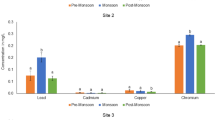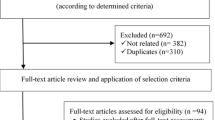Abstract
Effects of water volume and water column height on toxicity of cypermethrin, carbaryl, dichlorvos, tetradifon, maneb, captan, carbosulfan endosulfan and HgCl2 to juvenile rainbow trout (Oncorhynchus mykiss, 3.2 ± 0.7 g) were evaluated in different glass aquaria under static conditions. When fish were exposed to the chemical compounds in 23 cm water column height (25 L), their mortality ranged between 0% and 58%. At the same water volume, but lower water column height (9 cm), mortality of fish increased significantly and was in a range from 60% to 95%. At the same water column height, toxic effects of chemicals were significantly higher in 25 L water volume than that of 8.5 L, water except maneb which has lowest (−0.45) octanol–water partition coefficient value. Mortality rates ratio of 9 and 23 cm water column height ranged between 1.12 and 90 while mortality rates ratio of 9 and 25 L water volume ranged between 1.20 and 4.0. Because actual exposure concentrations were not affected by either water volume or water column height, we propose that increased pesticides’ toxicity was related to an increase in bioassay volume, since more pesticide molecules were able to interact with or accumulate the fish. However, there seem to be no relationship between the effects of water volume, water column height and Kow value of chemicals with regard to toxicity in juvenile rainbow trout.


Similar content being viewed by others
References
Altinok I, Capkin E, Karahan S, Boran M (2006) Effects of water quality and fish size on toxicity of methiocarb, a carbamate pesticide, to rainbow trout. Environ Toxicol Pharmacol 22:20–26
ATSDR (Agency for toxic substances and disease registry) (1997) Toxicological profile for dichlorvos. Public health service, Atlanta, GA
Barcelo D, Hennion MC (2003) Trace determination of pesticides and their degradation products in water, 2nd edn. Elsevier, Sara Burgerhartstraat 25, pp 157–236
Boyd CE, Tucker CS (1992) Water quality and pond soil analysis for aquaculture. In: Alabama Agricultural Experiment Station. Auburn University, Alabama, USA
Brito NM, Navickiene S, Polese L, Jardim EFG, Abakerli RB, Ribeiro ML (2002) Determination of pesticide residues in coconut water by liquid–liquid extraction and gas chromatography with electron-capture plus thermionic specific detection and solid-phase extraction and high-performance liquid chromatography with ultraviolet detection. J Chrom A 957:201–209
Capkin E, Altinok I, Karahan S (2006) Water quality and fish size affect toxicity of endosulfan, an organochlorine pesticide, to rainbow trout. Chemosphere 64:1793–1800
Chiou CT (2002) Partition and adsorption of organic contaminants in environmental systems. Wiley, New York, p 257
Finizio A, Vighi M, Sandroni D (1997) Determination of n-octanol/water partition coefficient (Kow) of pesticide critical review and comparison of methods. Chemosphere 34:131–161
Fogels A, Sprague JB (1977) Comparative short term tolerance of zebra fish, flagfish, and rainbow trout to five poisons including potential reference toxicants. Water Res 11:811–817
ICSC International Chemical Safety Cards (1993) Endosulfan (ICSC:0742). http://www.actrav.itcilo.org/actrav-english/telearn/osh/ic/115297.htm. Accessed 25 Sept 2010
IPCS International Programme on Chemical Safety (2001) Cypermethrin, ICSC: 0246. http://www.inchem.org/documents/icsc/icsc/eics0246.htm. Accessed 25 Sept 2010
IPCS International Programme on Chemical Safety (2003) Mercuric chloride ICSC: 0979. http://www.inchem.org/documents/icsc/icsc/eics0979.htm. Accessed 25 Sept 2010
Irth H, De Jong GJ, Frei RW, Brinkman UAT (1990) Determination of dithiocarbamate fungucides in vegetable foodstuffs by high-performance liquid chromatography. J Agric Food Chem 31:461
Mackay D (1991) Multimedia environmental models: The fugacity approach. Lewis Publishers, Chelsea, MI
OECD (Organization for Economic Co-operation and Development) (1992) OECD guideline for testing of chemicals. Fish, Acute Toxicity Test 203:1–9
PPED (Pesticide Physicochemical and Ecotoxicological Data) (1988) Carbosulfan (Ref: OMS 3022). Available via DIALOG. http://www.sitem.herts.ac.uk/aeru/footprint/en/Reports/121.htm. Accessed 25 Sept 2010
PPED (Pesticide Physicochemical and Ecotoxicological Data) (2010) Maneb (Ref: ENT 14875). Available via DIALOG. http://www.sitem.herts.ac.uk/aeru/iupac/Reports/426.htm. Accessed 25 Sept 2010
PPED (Pesticide Physicochemical and Ecotoxicological Data) (2011) Tetradifon (Ref: ENT 23737). Available via DIALOG. http://www.sitem.herts.ac.uk/aeru/iupac/Reports/627.htm. Accessed 10 Jan 2011
Sprague JB (1995) Factors that modify toxicity. In: Rand GM (ed) Fundamentals of aquatic toxicology: effects, environmental fate and risk assessment. Taylor and Francis, Washington, DC
Stratton GW, Giles J (1990) Importance of bioassay volume in toxicity tests using algae and aquatic invertebrates. Bull Environ Contam Toxicol 44:420–427
USEPA (1984) US Environmental Protection Agency. Health and Environmental Effects Profile for Captan. EPA/600/x-84/253. Environmental Criteria and Assessment Office, Office of Health and Environmental Assessment. Office of Research and Development, Cincinnati, OH
Veith GD, Defoe DL, Bergstedt BV (1979) Measuring and estimating the bioconcentration factor of chemicals in fish. J Fish Res Board Can 36:1040–1046
Weltz B, Schubert-Jacobs M (1991) Evaluation of a flow injection system and optimization of parameters for hydride generation atomic absortion spectrometry. Atom Spectrosc 12:91–103
Acknowledgment
The study was supported by Karadeniz Technical University Research Fund and Faculty of Marine Science.
Author information
Authors and Affiliations
Corresponding author
Rights and permissions
About this article
Cite this article
Altinok, I., Capkin, E. & Boran, H. Influence of Bioassay Volume, Water Column Height, and Octanol–Water Partition Coefficient on the Toxicity of Pesticides to Rainbow Trout. Bull Environ Contam Toxicol 86, 596–600 (2011). https://doi.org/10.1007/s00128-011-0281-4
Received:
Accepted:
Published:
Issue Date:
DOI: https://doi.org/10.1007/s00128-011-0281-4




